|
In September 1951 the college had a
new principal in the form of Mr. Charles Leslie-Old. In
the same year the College became Wolverhampton and
Staffordshire College of Technology.
'G Block' was built beside the front yard,
along with the building at the back of the yard and the
building in Wulfruna Street that's between the 1932
building and what was the George Hotel.
The new buildings included accommodation for the
departments of Electrical and Production
Engineering. The new laboratories were as follows:
an Electrical Machines' Laboratory with a full range
of modern DC and AC machines, a laboratory for
Electronics and Telecommunications, including
measuring instruments, a Machine Shop, well equipped
with lathes, millers, grinders, etc., and a Machine
Tools' Laboratory.
There was also a Heat Treatment
and Testing Laboratory, a Metrology Laboratory, a
Work Study Laboratory, a Welding and Sheet Metal
Work Shop and a Toolmaking and Bench Fitting Shop.
The college was well-supported by local industry and
received gifts amounting to approximately £12,000.
Within a few years more buildings had been added
alongside Stafford Street, including ‘B
Block’, which opened in 1953 and was occupied by
Wulfrun College until 1961. |

The opening dates for the
earlier buildings on the site.

The Refreshment Room, built in
1948.
|
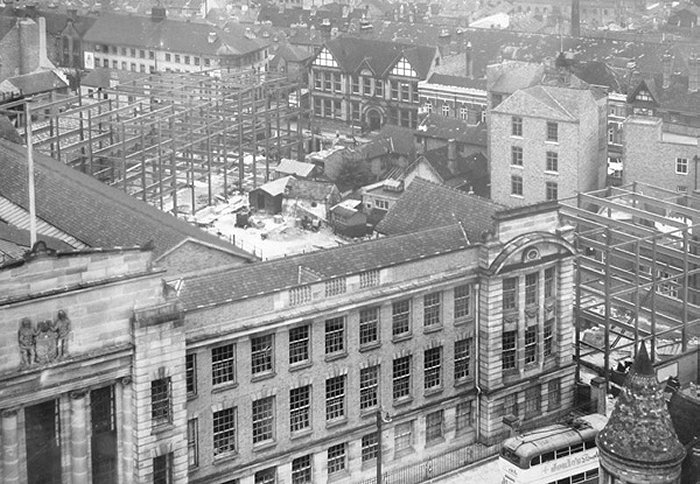
Looking down on the 1951
extensions, from St. Peter's Church. |
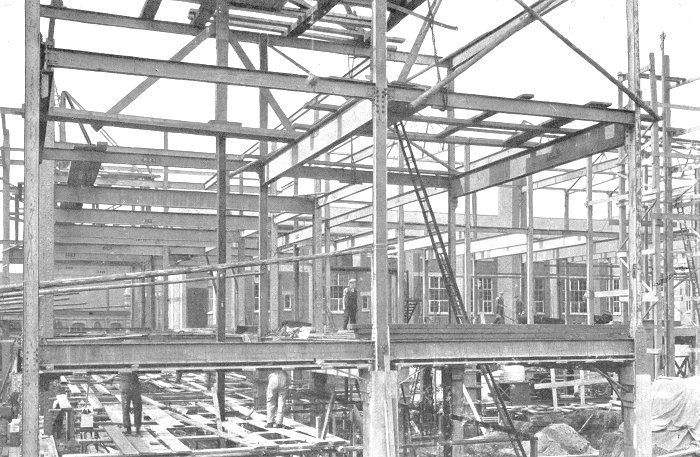
Building work for the
Stafford Street extension in 1951. The
structural steelwork was fabricated and erected
by Herbertson & Company Limited, Beaconsfield
Works, Wolverhampton. |
| Around this time, student numbers rapidly
grew, from 3892 in 1951 / 1952 to 6236 in 1957 /
1958. This led to a reduction in student fees
from £6.2s.0d. for class entry in 1949 / 1950 to
£4.18s.6d. in 1950 / 1951. Staff also benefited
when the local authority allowed them to travel
first class on trains, whilst on college
business. Teaching allowances were also given to
staff studying for higher degrees. One of the
first acts of the new principal was to ensure
that the Fraser Collection of geological rock
samples that had been donated to the council,
would be displayed at the college. It would be
of great interest to geology students and civil
engineering students. The collection was
displayed on the ground floor, where it remained
for many years. One area that was in need of
improvement was the library, which was situated on
the top floor above 'The Marble'. In 1950 HM
inspectors noted that it housed just 25 students
at a time, seated at small tables and that the
number of volumes was 4,500. By 1954 there were
still only 5,500 volumes, but the number of
periodicals had increased to 135. In the year
1953 / 1954 a full time librarian was finally
appointed. Things wouldn't improve until 1974
when the library temporarily moved to the ground
floor of 'B Block'. |
|

The machine room. From the 1953 Wolverhampton
Handbook. |
| Research was becoming more important. By
1956 there were eight members of staff carrying
out full time research. The research included a
study of industrial dusts, carried out in
Applied Sciences, design work on gas turbines
for the Ministry of Fuel and Power, measuring
the torsional strength of cast iron and of
ductile cast iron. In the Production Engineering
Department, two research assistants were at work
on research into cutting tools and in the
Mechanical Engineering Department a local firm
is sponsoring research into problems with heat
exchangers. |
|

The gymnasium. From the 1953 Wolverhampton
Handbook. |
|

Another view of the
gymnasium. |
| The college's first computer, completed
in 1951, known as the
‘WITCH’ arrived in 1957. WITCH stands for Wolverhampton
Instrument for Teaching Computing from Harwell. The computer was designed by R. C. M.
Barnes & E. Cooke Yarborough to do calculations concerned with
nuclear research. It was known as the Harwell Dekatron Computer and
had twenty stores. It was replaced at Harwell
by one of the early commercially built computers and offered as a
gift through the Oxford Mathematical
Institute, to the college that could present
the best case for its future use. A short list of nine colleges was
drawn up. After a visit from a member of
staff, it was decided that the computer
would be offered as a gift to Wolverhampton.
In its first year at the college, local
firms donated £525 towards its upkeep and
several courses and visits were arranged for
sixth formers from local schools. Early
projects included
work for the West Midlands Gas Board, the production of combinations for
safe locks, carried out by Peter Burden, and a number of
mathematical programs.
On the 27th March, 1973, the computer was given to Birmingham Science
Museum, in Newhall Street, but when that
closed it went to the Museum Collection
Centre in Dollman Street, Duddeston. In 2008
it was spotted by a member of staff from the
National Museum of Computing at Bletchley
Park. The people there realised its
importance as the oldest, still functioning,
electronic stored program computer in the
world, in original condition. Bletchley Park
acquired the computer, which is now on
permanent display as a working exhibit.
Peter Burden was initially very involved in
the restoration. |

The WITCH, with Peter Burden on
the left and Frank Hawley on the right, examining some
punch tape. At the time Peter was 17 years old and still
at school. |
| In 1957 the college began a part time
training course for teachers in further
education that led to a City and Guilds
Technical Teacher's Certificate. On the 1st January, 1958, the college principal, Mr. Charles Leslie-Old left
and was replaced by Mr. Robert Scott. By 1959 the
college had 6,236 students.
|

Details of a short arc
welding course in 1959. Courtesy of David
Parsons. |
| |
|
Read
about the Students' and Teachers' Union,
annual Rag Day |
 |
| |
|
Collaboration between the college and
Wulfrun College continued after 1961 when
Wulfrun College had moved from 'B Block' to
its Paget Road site. It was planned that
Wulfrun College would be responsible for
courses up to ONC level and Wolverhampton
College of Technology would cater for higher
level courses. From September 1962 twenty
two courses moved to Wulfrun which gave each
college a student population of around
5,000. It was a sad and worrying time for
staff, because some would have to move and
others would not.
Also in 1962 there were many joint
projects with industry. One that caught the
public's imagination at the time was a
machine developed by Mr. M. H. Matthews of
the Production Engineering Department. It
could pin-point a target spot for brain
surgery. Within two years there were over 80
collaborative projects with industry.
In July 1963, permission was given for
the purchase of an IBM 1620 computer to
replace the WITCH. At the time, the WITCH
was still seen as a useful teaching aid
because of its slow speed, visible storage
and simple programming code.
In the early 1960s the number of full
time students drastically increased, so a
college hostel became an important
consideration. A member of the teaching
staff, Mr. H. K. Hammond, volunteered to
become Lodgings Officer. He was to make lists of
approved lodgings and keep an eye on the
students' welfare. At the end of 1964, Brinsford Lodge, an ex-Malayan teachers'
college was acquired as a hostel for 250
resident students, and 40 staff. It opened
in September 1965 and was assisted by the
local authority who allowed some council
houses to be used for student accommodation.
From 1964 the college began to run
BA degree courses, including English,
mathematics, geography, history,
music, physics, zoology and economics, and a year later an
honours degree course in
computer technology.
In 1966 the college became Wolverhampton
College of Technology. Over the next twelve
months 24 staff members were transferred to
Wulfrun College and 43 new posts were
created. The first degrees were awarded in
1967 and Management and Business Studies acquired
premises in St. John's Square. |
|
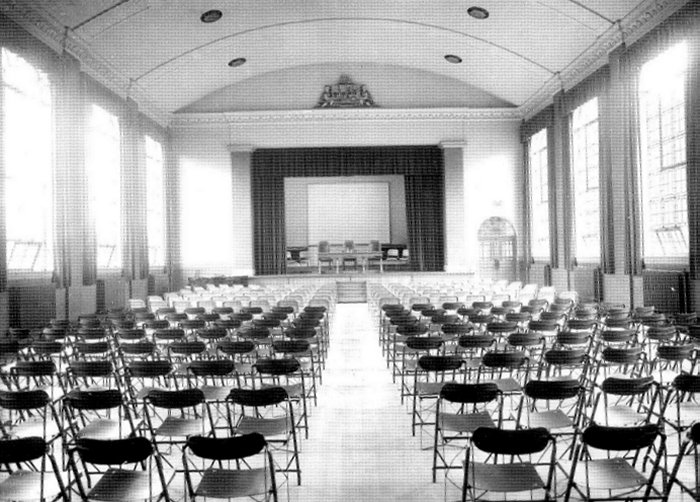
The main Hall. |
| In 1963 the Wolverhampton College of Art began
running a degree-level course in the form of a Diploma
in Art and Design.
In 1967 the college’s
Principal, Robin Plummer, oversaw the building of a new
college alongside Ring Road St Peters. Work on the new
site began in the summer of 1967, and by early 1969 the
new building had appeared.
The first degree show was held
there on 12th June, 1969 and the first full academic
year started in September 1969. The building was
officially opened by ex-student, Sir Charles Wheeler on
the 23rd October, 1970.
On the 1st September, 1969,
Wolverhampton College of Technology merged with
Wolverhampton College of Art to form The Polytechnic,
Wolverhampton. It had five faculties: Applied Science,
Art and Design, Arts, Engineering, and Social Sciences.
The Director was Robert Scott. Associate Directors were
Robin Plummer and Mr. J. H. Williams. There were
the following departments: Building and Civil
Engineering, Chemistry and Biology, Economics and Social
Studies, Electrical and Electronic Engineering, Finance
Law and Government, Fine Art, Graphic Design, Industrial
and Product Design, Languages, Management Centre,
Management Studies, Materials, Mathematics and
Computing, Mechanical Engineering, Modern Studies,
Production Engineering. The
Polytechnic inherited Himley Hall, the former home of
the Earls of Dudley. It housed the Management Centre,
the Fraser geological collection, part of the Biological
Sciences Department and was used for many overflow
classes. |
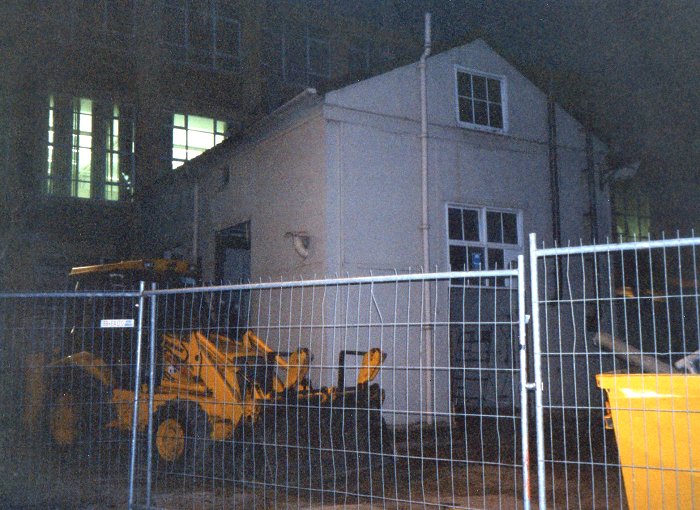
The coal research station in the
back yard, behind rooms 10 and 11,
during demolition. It was used for research into British
coal utilisation and run by a technician called Tom.
Courtesy of David Parsons. |
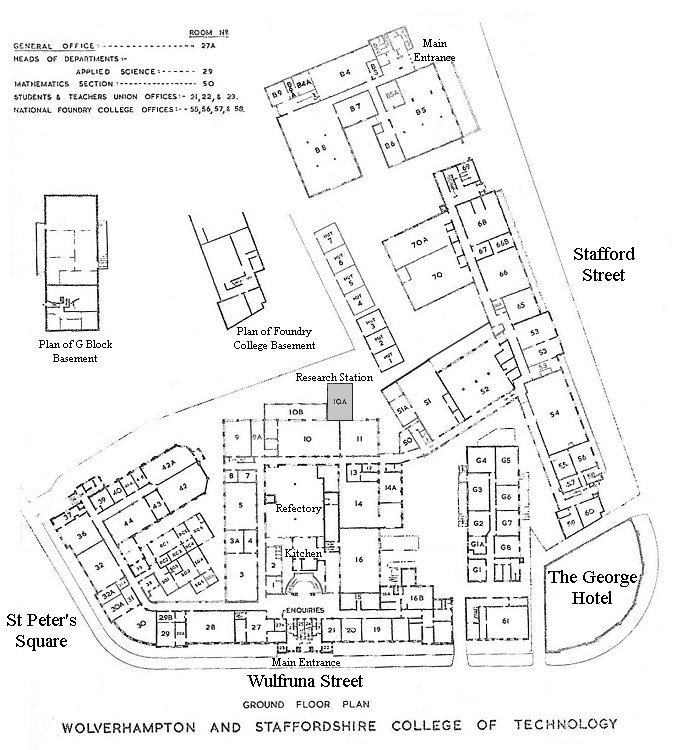
The location of the coal research station.
Courtesy of David Parsons.
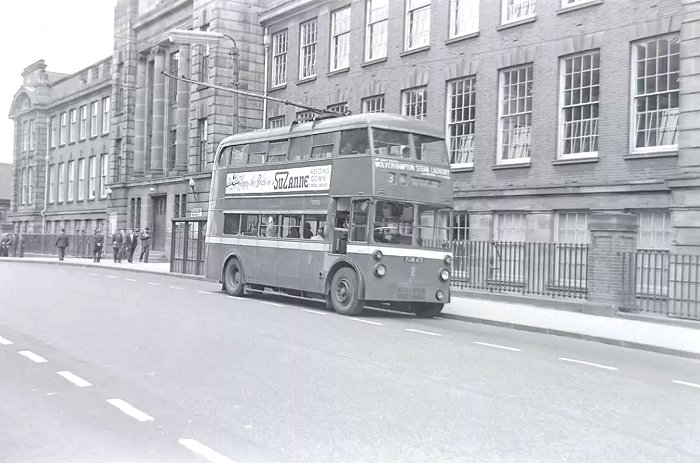
The bus stop that was outside the Polytechnic.
 |
|
 |
|
 |
Return to
Day Courses |
|
Return to
the contents |
|
Proceed to
a
1950s Booklet |
|